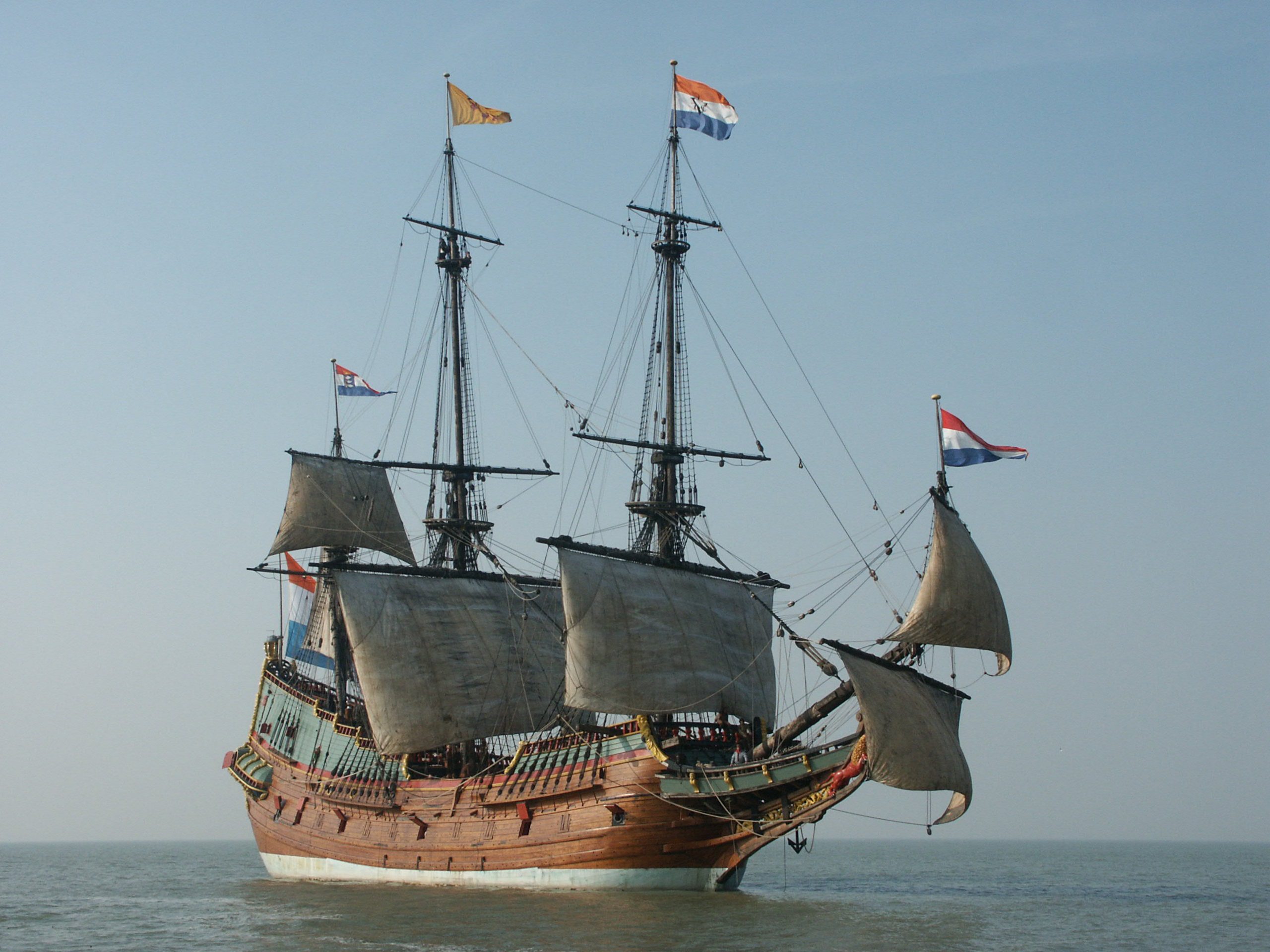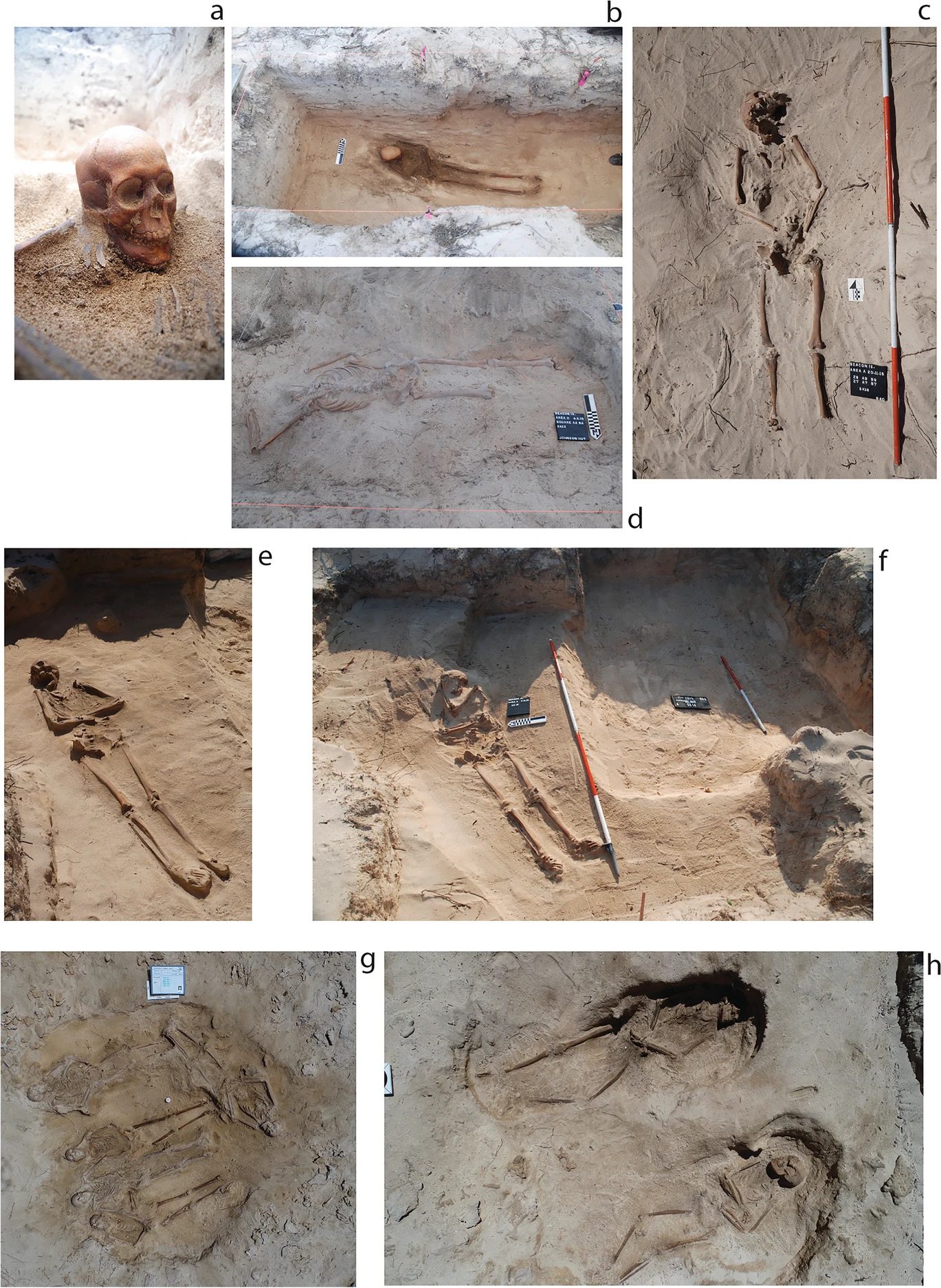On June 4, 1629, the Dutch East India Company’s flagship Batavia was lost off the coast of Western Australia. What unfolded was a tragic tale of mutiny and murder that has captured the imaginations of historians and archaeologists. Now, the findings of a five-year project have shed new light on what became of the Batavia and her crew, both at sea and on land.
The voyage of the Batavia
The Batavia was on her maiden voyage when tragedy befell her. One of a fleet of eight ships, the vessel departed the port of Texel in October 1628, bound for the Dutch East Indian colonies in modern-day Indonesia to bring back spices for trading. An estimated 341 people were aboard, mostly the ship’s company with a few soldiers and private travelers.

A replica showing how the 46-meter (150-foot) vessel might have looked.
Over the course of the treacherous voyage, the remaining ships in the fleet were either lost or became separated, so the Batavia ended up crossing the Indian Ocean alone. By this time, tension was brewing between the two most senior officers: Commander Francisco Pelsaert, head of the fleet, and the Batavia’s captain Ariaen Jacobsz. With Pelsaert confined to his cabin, unwell, Jacobsz had ample time to confer with his friend and co-conspirator Jeronimus Cornelisz about a possible mutiny.
The details of the events leading up to the wreck are not completely clear. It’s been suggested that the brutal assault of a woman who was traveling alone on the ship to rejoin her husband in the colonies could have been planned as a way to provoke Pelsaert into punishing those involved, thus kicking off the mutiny. However, what we do know is that disaster struck before the alleged mutiny could really get off the ground.
The wreck of the Batavia
It was in the early hours of the morning on June 4 that the Batavia hit the Morning Reef, 60 kilometers (37 miles) off the coast of Western Australia. It’s an area that was particularly prone to shipwrecks, due to the difficulty of navigating by dead reckoning in an age when it was impossible to accurately measure your longitude.
As Pelsaert recorded in his journal: “I was lying in my bunk feeling ill and felt suddenly, with a rough terrible movement, the bumping of the ship’s rudder, and immediately after that I felt the ship held up in her course against the rocks, so that I fell out of my bunk […] I said, ‘Skipper, what have you done that through your reckless carelessness you have run this noose round our necks?'”
Around 100 people died as an immediate result of the collision. In many ways, though, this was only the beginning.
Mutiny and massacre
Some of the crew managed to use a longboat to get to what’s now known as Beacon Island, one of the nearby Abrolhos Islands. Pelsaert and Jacobsz were among the survivors, and in the coming days, they scoured the islands looking for any sign of food or water. Finding none, they decided to go with a few sailors and the remaining ship’s officers to the Australian mainland, setting off in the middle of the night and abandoning the remaining survivors.
A few days later, Cornelisz – who had remained on the ship until the last possible moment – arrived on Beacon Island and placed himself in charge of the rudderless group, surrounding himself with those who had been sympathetic to the planned mutiny.

An illustration of Beacon Island from a published book based on Pelsaert’s diaries.
What followed was something of a reign of terror. Cornelisz took control of all remaining weapons and boats, and split the survivors between two separate islands. Then, he ordered his men to systematically massacre them.
Some had their throats cut in the dead of night; others were taken out to sea and drowned. Women were raped, and some survivors were forced to turn on each other to save their own lives. Conflict broke out between Cornelisz’s men and a group who had been sent to another island, where they had happened to find water and wallabies that they could kill and eat. The bloody battle between the warring factions went on for months – until, one day, Pelsaert returned.
Having been unsuccessful in their search for water, Pelsaert and Jacobsz had undertaken a remarkable voyage all the way to their original destination in the Dutch East Indian colonies, and after many weeks the fleet commander had finally returned with a rescue ship.
The mutineers under Cornelisz’s command were captured and brutally tortured, culminating in Cornelisz being hanged along with several accomplices. The remaining mutineers were eventually taken to the colonies where they were tried and executed, save two who were marooned and left to their fate.
It’s a brutal end to a horrific story; but as well-known as the tale became, particularly after Pelsaert’s journals became the first-ever bestselling book to be set in Australia, there was limited archaeological evidence to shed light on what really became of the survivors of the wreck of the Batavia. A new study from the University of Western Australia and the Western Australian Museum has changed that.
Uncovering the past
The culmination of over a decade of work, a five-year excavation has uncovered a number of gravesites and artifacts on the Abrolhos Islands.

Burials uncovered on Beacon Island between 2015 and 2018.
“Through meticulous analysis, we’ve discovered the remains of 12 victims, interred in both individual and mass graves, as well as evidence of a fierce struggle between survivors and a group of mutineers, and remnants of a possible gallows site where justice was served,” said lead author Professor Alistair Paterson in a statement.
The findings go beyond analysis of the wreck of the ship itself, to provide real evidence of the behaviors and practices of the survivors. “The excavation of human remains reveals insights into the treatment and burial practices of victims. Notably, centrally located graves on Beacon Island suggest a functioning graveyard, potentially representing victims from the early days following the wreck,” continued Professor Paterson.
“Other islands within the vicinity, such as Long (Seals) Island and West Wallabi Island, provide evidence of makeshift weapons, the presence of resistance factions, and structures associated with the survivors.”
In a grim finding, the researchers also uncovered evidence of iron fastenings that they think belong to the gallows where the mutineers were eventually executed.
More research is in the works, including forensic analysis of the human remains, but the results of this massive undertaking have added much to our knowledge of what is surely one of the darkest episodes in the region’s history.
The study is published in Historical Archaeology.
Source Link: Mutiny And Murder: Plumbing The Murky Depths Of The Batavia Shipwreck Story